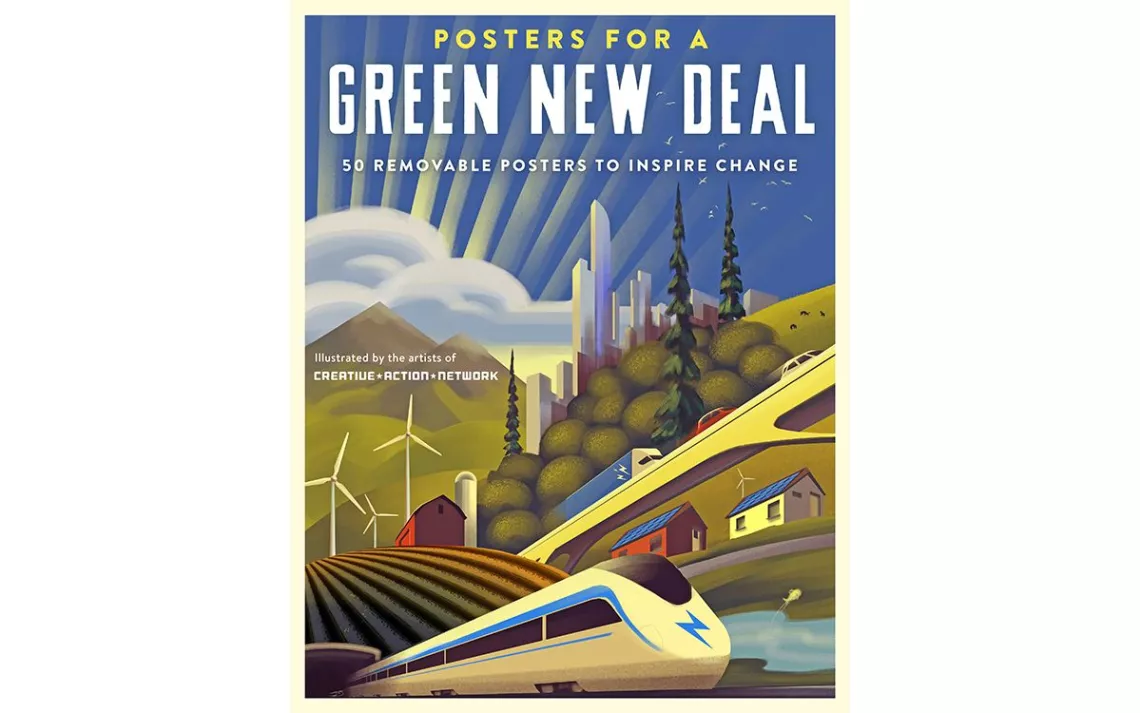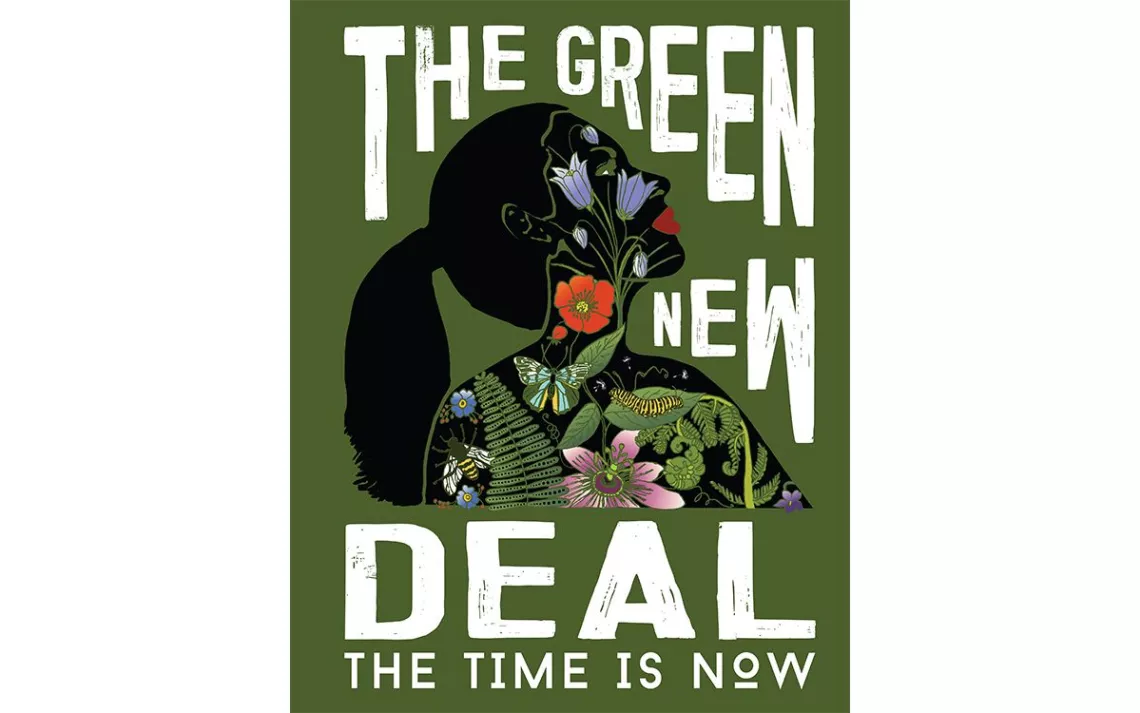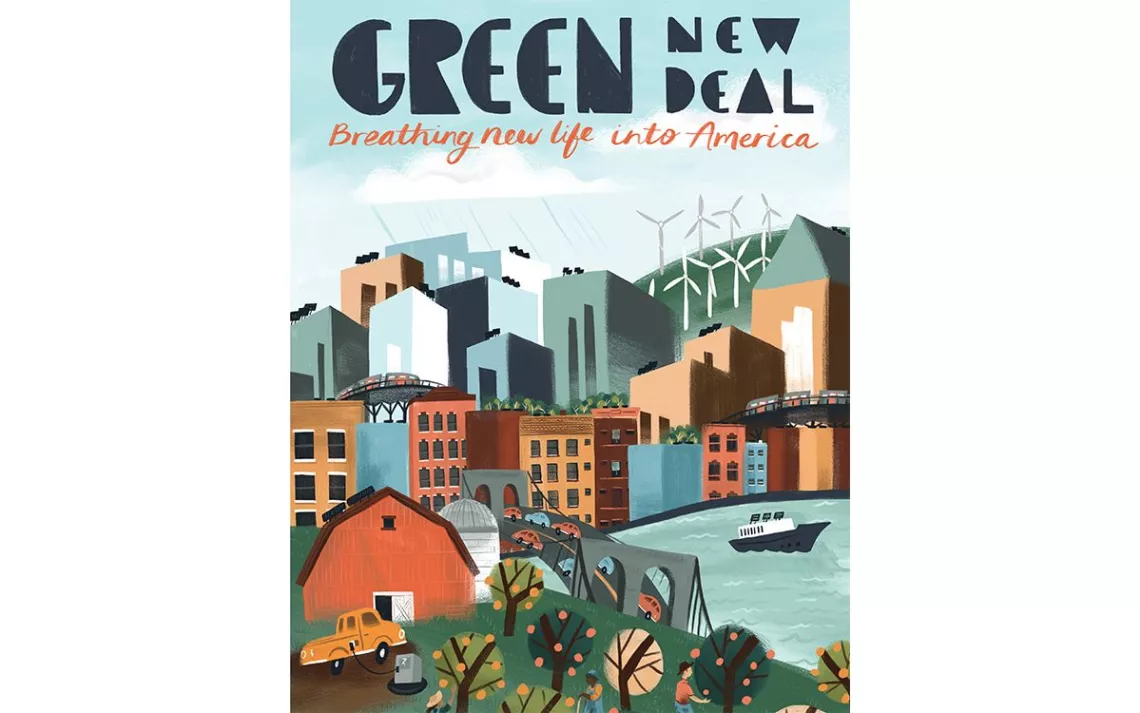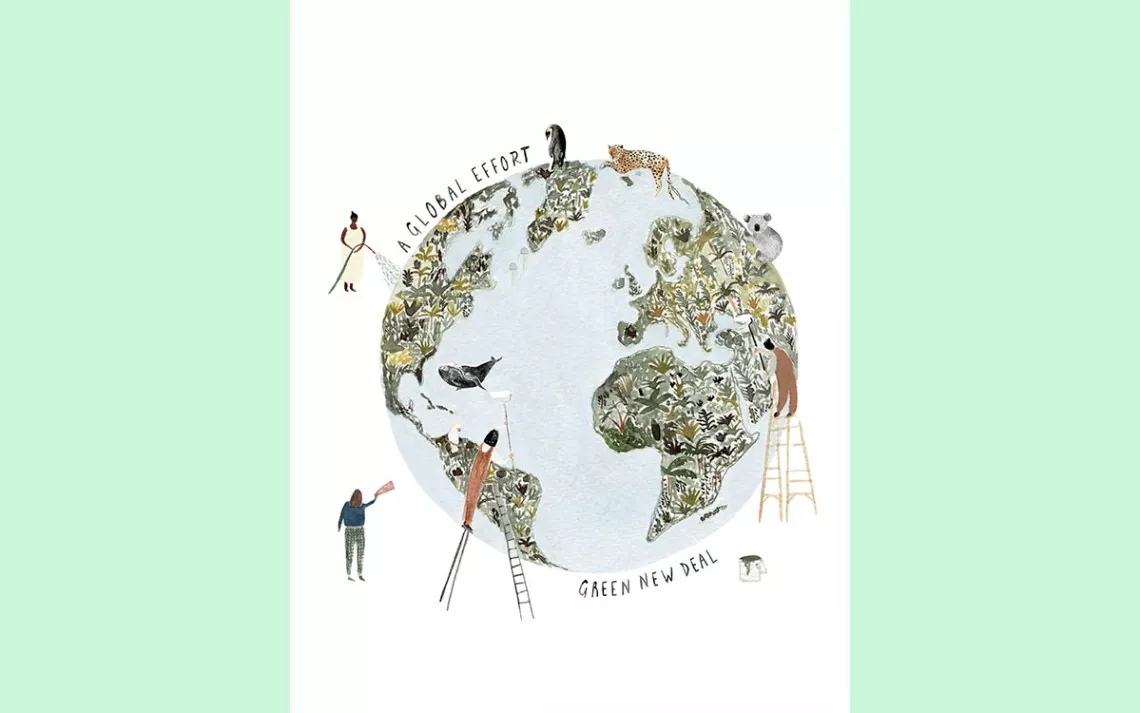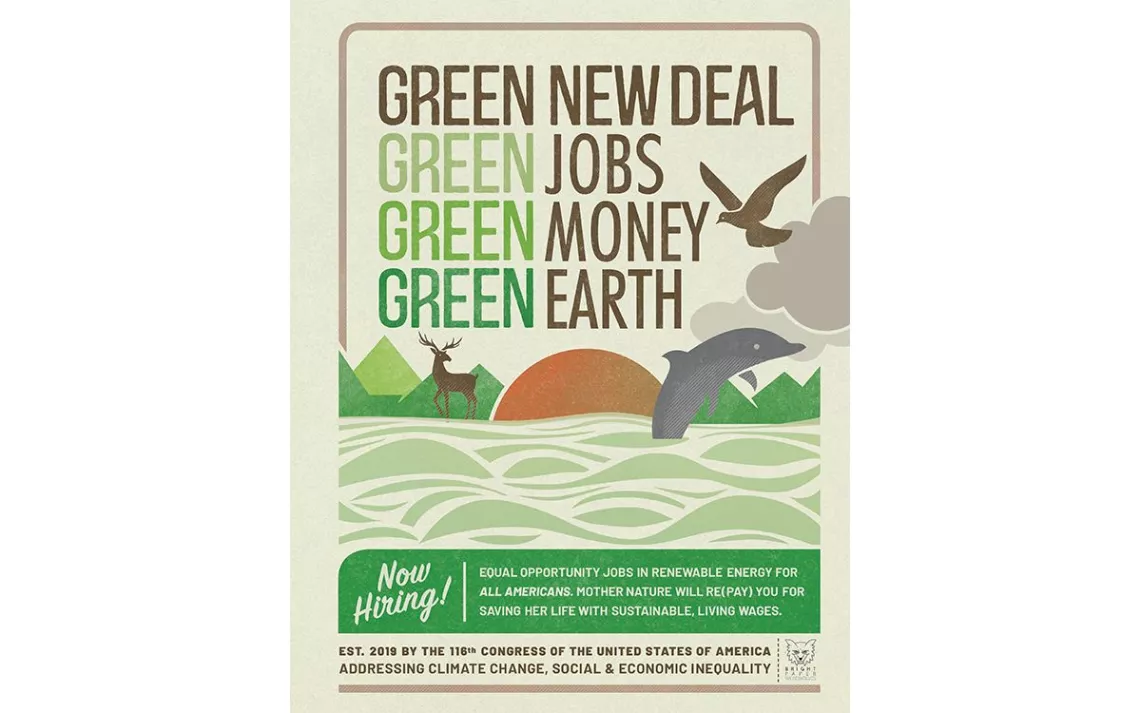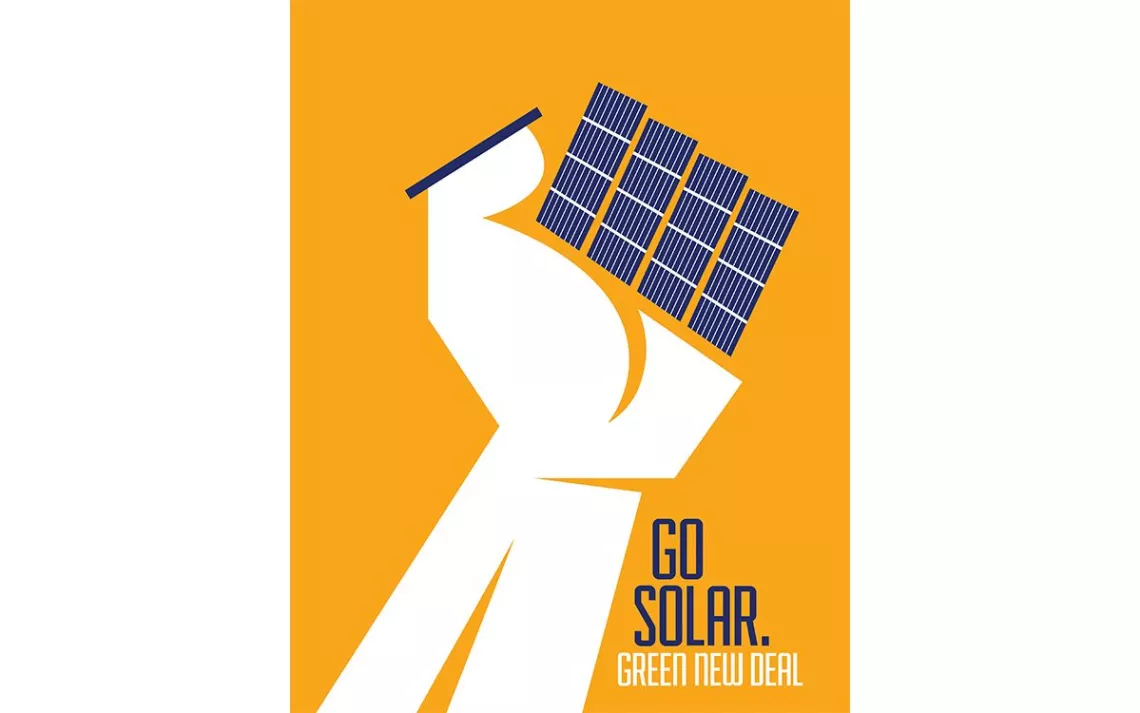Posters for a Green New Deal
They're proof that times of turmoil turn artists into activists
In the depths of the Great Depression, one in four Americans was unemployed, and millions lived on the streets. So the US government made massive investments that unleashed the productive capacity of American people to collectively raise the standard of living and develop a shared vision. During the New Deal, President Franklin Delano Roosevelt created the Works Progress Administration and employed 8.5 million Americans to improve the country with new infrastructure, parks, schools, hospitals, and the supplies to beat fascism abroad during WWII. By the end of the era, the country had fostered full employment, lifted itself out of the Great Depression, and ushered in a period of unprecedented prosperity—and a template for a society-wide mobilization for the greater benefit.
The astonishing mobilization very much extended into the arts—the WPA commissioned thousands of murals, photos, and posters that were intended to inspire and inform. It was art that demanded a response, a change in the public’s actions. Times of political turmoil, after all, have a way of turning artists into activists.
It’s why Workman Publishing last month unveiled Posters for a Green New Deal: 50 Removable Posters to Inspire Change. The collection of 40 oversize, removable (thanks to perforated edges) posters is the product of a call put out by Creative Action Network for illustrators to respond to a challenge even greater and more dangerous than any financial crisis in history—climate change.
Like its progenitor, the Green New Deal is a demand to mobilize all possible resources to address this existential threat. But it’s also a call to repair historic injustices that limit opportunity for Black and Latino communities, Indigenous nations, and women. After all, there’s no path to aggressive climate action that doesn’t involve rewriting the rules that enable fossil fuel companies and other fryers of the atmosphere to buy influence and pursue profits at the expense of marginalized communities and their members’ lives.
Posters for a Green New Deal represents a wide range of artistic styles and pairs each featured image with pithy text explaining the core issues it addresses (for instance, the GND jobs guarantee and the roles that ocean health, wealth inequality, and farming play in the climate crisis).
The idea is that readers can inform themselves and then put the posters to work by displaying them publicly, à la WPA posters of the 1930s. The book offers a beautiful and thoughtful reflection on the core values of the environmental movement. What's more, all proceeds benefit the Sunrise Movement, a coalition of young people uniting to fight the climate crisis.
Posters for a Green New Deal features work from independent artists and designers from across the country and functions as proof that the arts tend to flourish in tumultuous times. Take Los Angeles artist Brooke Fischer, who says she identified primarily as a botanical artist until the 2016 election. For the Women’s March, she made her flowers political in the form of a “Let Equality Bloom” poster creation. “All my art has been very nature-driven, because I want to promote a stop-and-smell-the-flowers perspective and force people to study the singular beauty of a plant or butterfly,” says Fischer, who donates portions of her proceeds to the Sierra Club, NRDC, Pollinators.org, and Democratic candidates (check out more of her eco-centric work via the above slideshow). “With our planet in peril, I just couldn’t deal until I started combining natural elements with messages I care about. It’s about engaging people in important causes, but in a lovely, passive, enjoyable way.”
Fischer’s goal with her activist art is to move people into the streets. “It’s about seeing a poster in someone’s window, thinking about its message, and then getting out to demand green jobs and common-sense legislation that addresses how essential our planet is,” she says. “It’s when people are vocally demanding that politicians listen.”
 The Magazine of The Sierra Club
The Magazine of The Sierra Club
